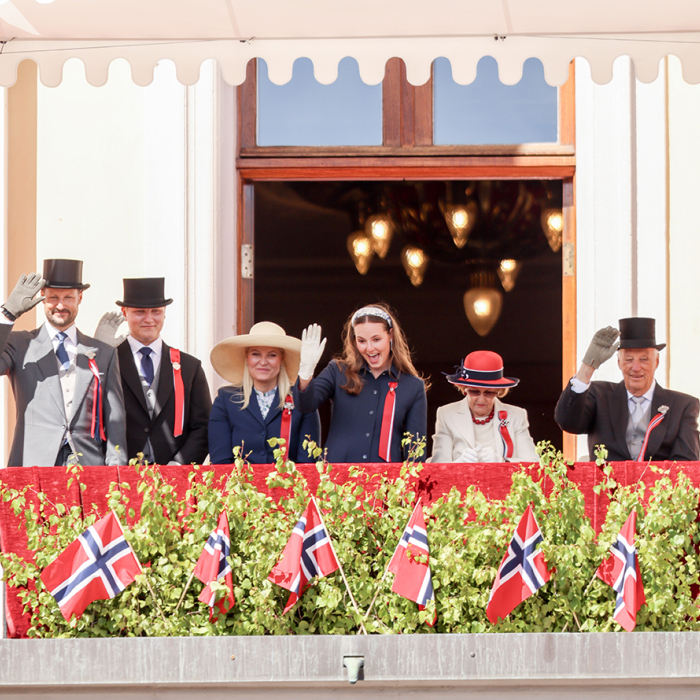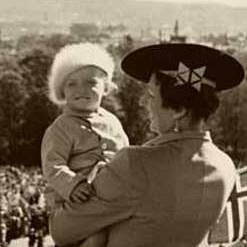The Crown Prince in Mongolia
His Royal Highness Crown Prince Haakon travelled to Mongolia in his capacity as Goodwill Ambassador for the UNDP on 3-6 November to study active local democracy. The Crown Prince met whith local politicians, teachers, students, nomads and NGOs.
On the first day, the Crown Prince visited a Community Development Centre that helps people living under difficult conditions to utilise the resources at their disposal and gain a feeling of mastery. The UNDP has contributed to the establishment of the centre, which includes a Nutrition Centre, where the Crown Prince was given a tour and a taste from the kitchen.
Our Home Ger School
At Our Home Ger* School, the Crown Prince met children who survive on rubbish and make their home at a waste disposal site in Ulaanbaatar. More than 100 children live here under extreme conditions. Ten of them are now getting a primary education. The school was established by a local NGO, with the help of the UNDP, which works to improve the lives of migrants and the underprivileged in one of the poorest areas of Ulaanbaatar. The Crown Prince participated in a class with the children, talking to them about Norway and Mongolia and listening to their dreams for the future. These visits illustrate the fundamental importance of active citizen participation to the development of democracy in Mongolia.
The Crown Prince had a working lunch with members of the Mongolian parliament, before paying a visit to the President of Mongolia, Mr N. Enkhbold, in the government building.
Free legal assistance
The Crown Prince also met two women who had received assistance free-of-charge at a Centre for Legal Aid. Very few Mongolians can afford counsel when they need it, and do not receive the help they need to ensure just treatment under the legal system. In cooperation with the Mongolian authorities, the UNDP has established centres offering free legal assistance throughout the country to improve the access of vulnerable groups to justice.
The evening concluded with a dinner with the staff of the UN Country Office.
Nomads in Khentii
On the second day of the visit, the Crown Prince travelled eastward to the Kentii province – the birthplace of Genghis Khan – to see local democracy in practice in rural areas. The Crown Prince was invited to lunch at the ger of a nomad family to hear about their life and experiences as subsistence herders. The Crown Prince observed demonstrations of traditional work methods and daily activities, such as lasso throwing, bareback riding, mane grooming and archery.
Thirty-five per cent of the Mongolian population continue to lead a nomadic lifestyle, travelling with their animals across the Mongolian steppes and producing cashmere and camel wool – two important exports.
Nomad families face numerous challenges, and are already experiencing the impact of climate change: winters are colder, with temperatures down to -40° C, and there is less precipitation in summer. In addition, they must travel long distances to school and to receive medical help. Children as young as six are often sent away from home to boarding school to get an education.
Street lighting
The Crown Prince also met with local politicians to discuss their experiences as decision-makers at the district level. He learned about one of the projects they had carried out: the installation of street lighting. The lighting has made the lives of women and children safer and led to a drop in the crime rate. This illustrates that the local population is often best at identifying its own needs and finding satisfactory solutions. The evening concluded with local cuisine and traditional Mongolian entertainment. The Crown Prince himself spent the night in a ger, experiencing firsthand the gusty winds and a low of – 5°C.
Lecture on the Millennium Development Goals
On the final day of his visit, the Crown Prince met with representatives from four NGOs that work to promote human rights and democratic governance. One of the UNDP’s key tasks is to encourage the development of and improve the conditions for NGOs – which are essential for democracy.
The Crown Prince also met with students and professors at the National University of Mongolia, where he held a lecture on the UN Millennium Development Goals, Global Dignity and his own work for the UNDP. To supplement the eight global Millennium Development Goals, Mongolia has created a ninth goal to foster democratic governance. The UNDP is assisting the Mongolian authorities in the effort to eradicate corruption.
Local handicrafts
After meeting with UNDP staff at the UN Country Office in Ulaanbaatar, the Crown Prince visited a shop that sells hand-crafted Mongolian woollen products. Supported by the Norwegian Lutheran Mission, the objective of the project is to help Mongolians from disadvantaged backgrounds to create new workplaces based on Mongolian traditions and animal husbandry.
40 years of diplomatic ties
The Crown Prince’s visit to Mongolia was concluded with a ceremony marking the 40th anniversary of the establishment of diplomatic ties between Mongolia and Norway. The ceremony featured a concert by Norwegian jazz pianist Bugge Wesseltoft, accompanied by Mongolian musicians.
* A ger is a traditional, circular tent (also called a yurt). A large number of Mongolians still live and work in such tents.
About the UN Millennium Development Goals
In 2000 all the countries in the world agreed to establish common goals to eradicate poverty, and eight Millennium Development Goals (MDG) were formulated.
The general goal – MDG 1 – was to eradicate extreme poverty and hunger. The first of three targets under the goal was to halve, between 1990 and 2015, the proportion of people whose income is less than USD 1 a day.
The eight MDG were to:
- Eradicate extreme poverty and hunger
- Achieve universal primary education
- Promote gender equality and empower women
- Reduce child mortality
- Improve maternal health
- Combat HIV/AIDS, malaria and other diseases
- Ensure environmental sustainability
- Develop a global partnership for development
At the end of 2015, significant progress had been made in all eight areas, and the countries of the world decided on 17 new goals - the Sustainable Development Goals.
Current news

Happy Constitution Day!
The Royal Family was in attendance on the Palace Balcony when the children's parade reached the Palace Square at 10:30 this morning. From there, they could greet more than 26,000 children from 109 schools taking part in Oslo's children's parade this year.

Celebrating May 17th
For more than 100 years, the Royal Family has greeted the Constitution Day children’s parade in Oslo from the balcony of the Royal Palace.

 Enlarge
Enlarge



